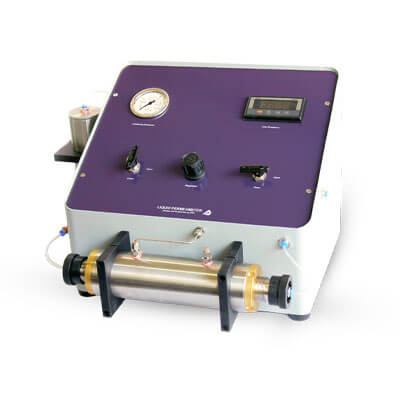Product Overview
The Liquid Permeability Measurement Device is a reliable and cost-effective system designed to determine the absolute permeability of core samples using liquid under ambient temperature conditions. Based on Darcy’s Law and utilizing the steady-state flow method, this instrument provides accurate permeability readings by analyzing the pressure drop and steady fluid flow rate across a core plug.
Its manual configuration, durable structure, and educational focus make it ideal for universities, research laboratories, and petroleum training centers. The device is especially engineered to facilitate hands-on learning and to enhance understanding of fluid flow through porous media.
Technical Specifications
-
Permeability Range: 0.1 millidarcy to 5 darcy
-
Core Sample Dimensions: Diameter 1.5 inches, Length 1–3 inches
-
Flow Pressure: Up to 100 psi
-
Confining Pressure: Up to 600 psi
-
Operating Temperature: Ambient
-
Pressure Transducer Accuracy: 0.1% Full Scale
-
Core Holder Material: Corrosion-resistant stainless steel
-
Air Supply Requirement: Up to 600 psi
Key Advantages
✅ High measurement precision using a high-accuracy pressure transducer (0.1% FS)
✅ Optimized for educational use in core analysis and reservoir engineering courses
✅ Cost-effective solution compared to imported alternatives
✅ Robust and simple design for hassle-free operation in laboratory settings
✅ Adjustable configuration to accommodate various core sample sizes
Working Principle
The device operates on a straightforward process:
A core plug is placed inside a stainless steel Hassler-type core holder, and a controlled liquid flow is introduced. The system measures both pressure differential and flow rate, which are then used to calculate absolute permeability via Darcy’s Law for single-phase flow in porous media. Data can be manually recorded or processed using pre-designed calculation templates.
Applications
-
Academic institutions: Teaching core permeability and flow through porous media
-
Research laboratories: Experimental investigations on rock properties
-
Technology development centers: Evaluating comparative rock performance
-
Oil and gas industry: Supporting reservoir studies and core analysis workflows


